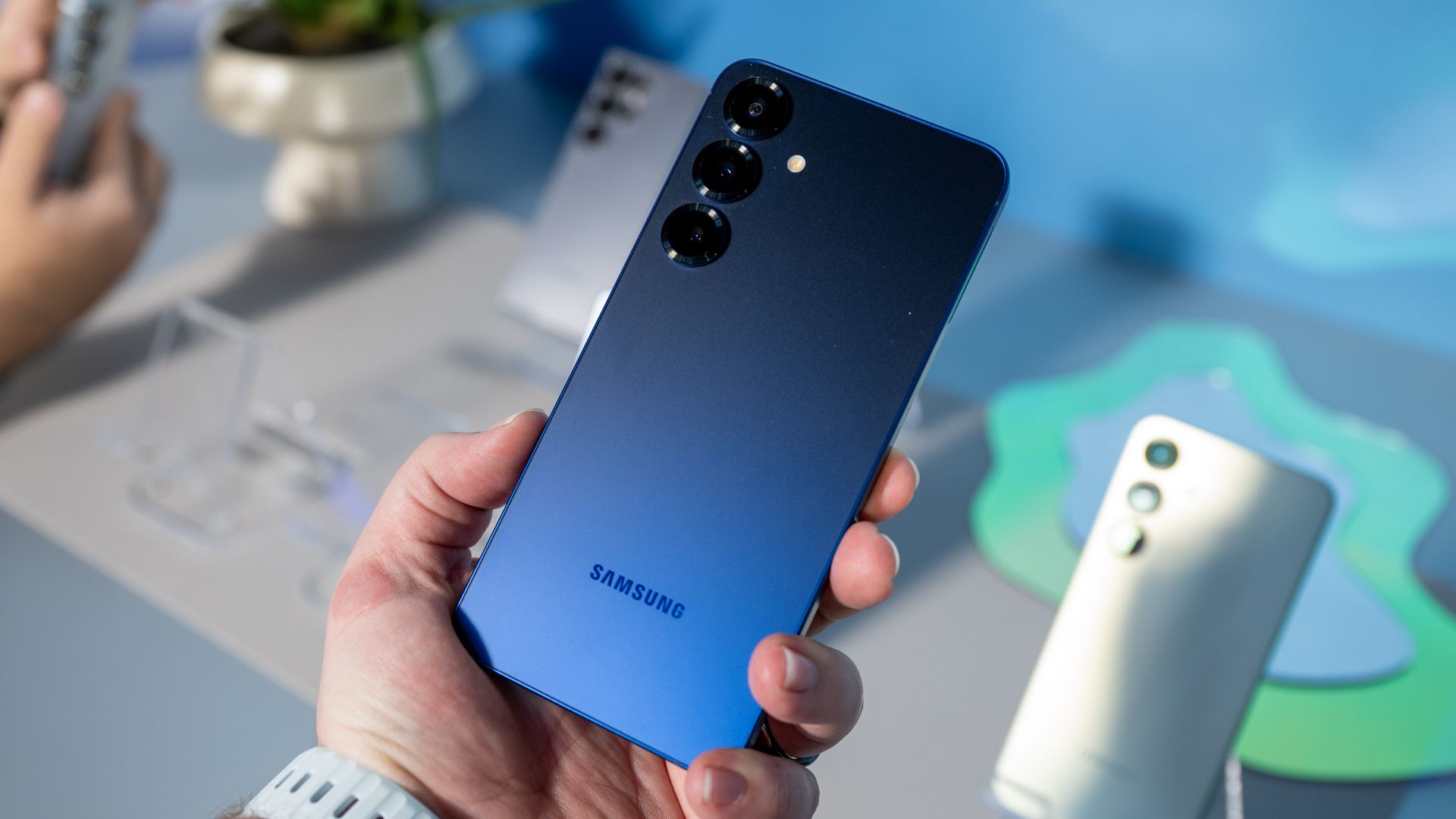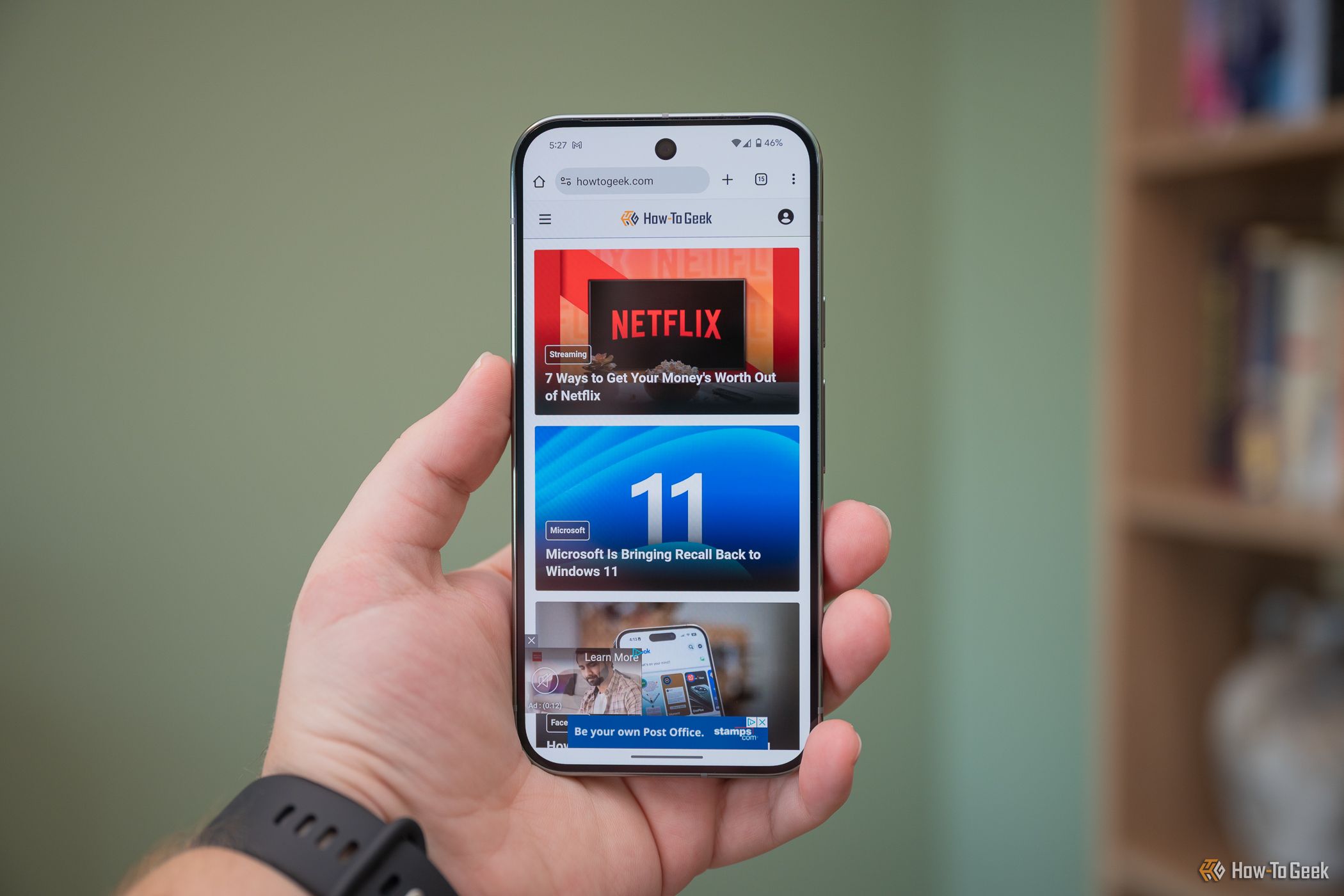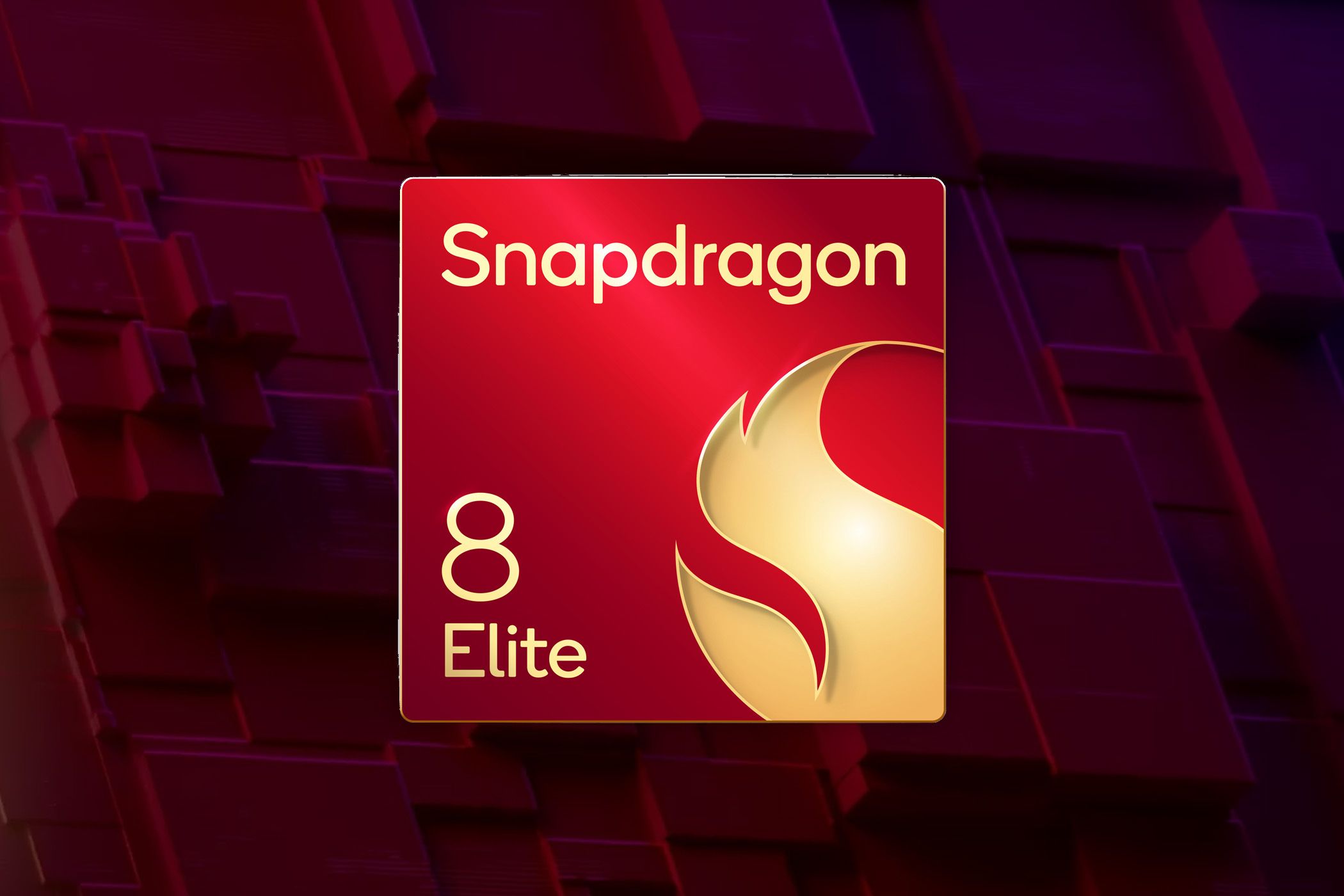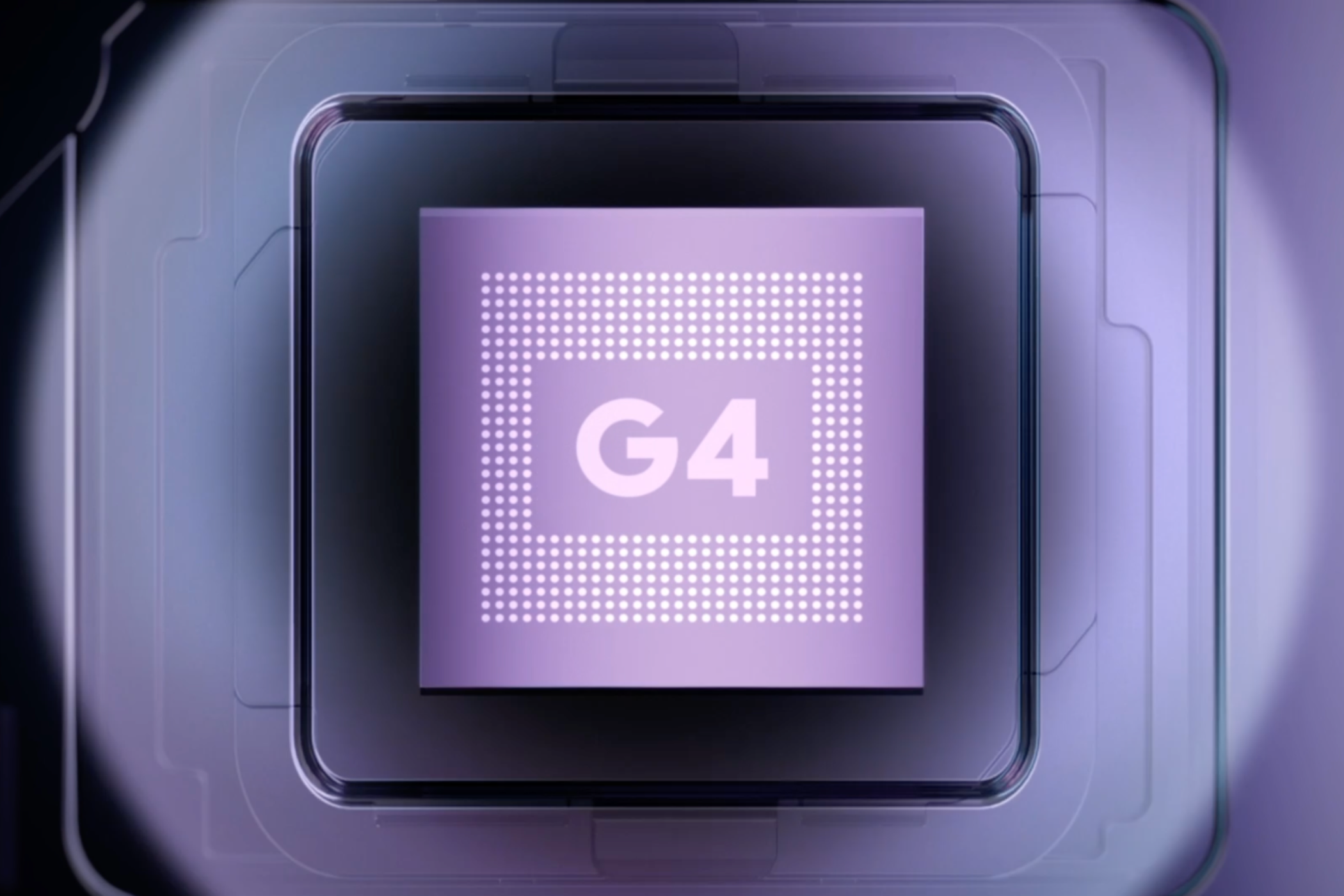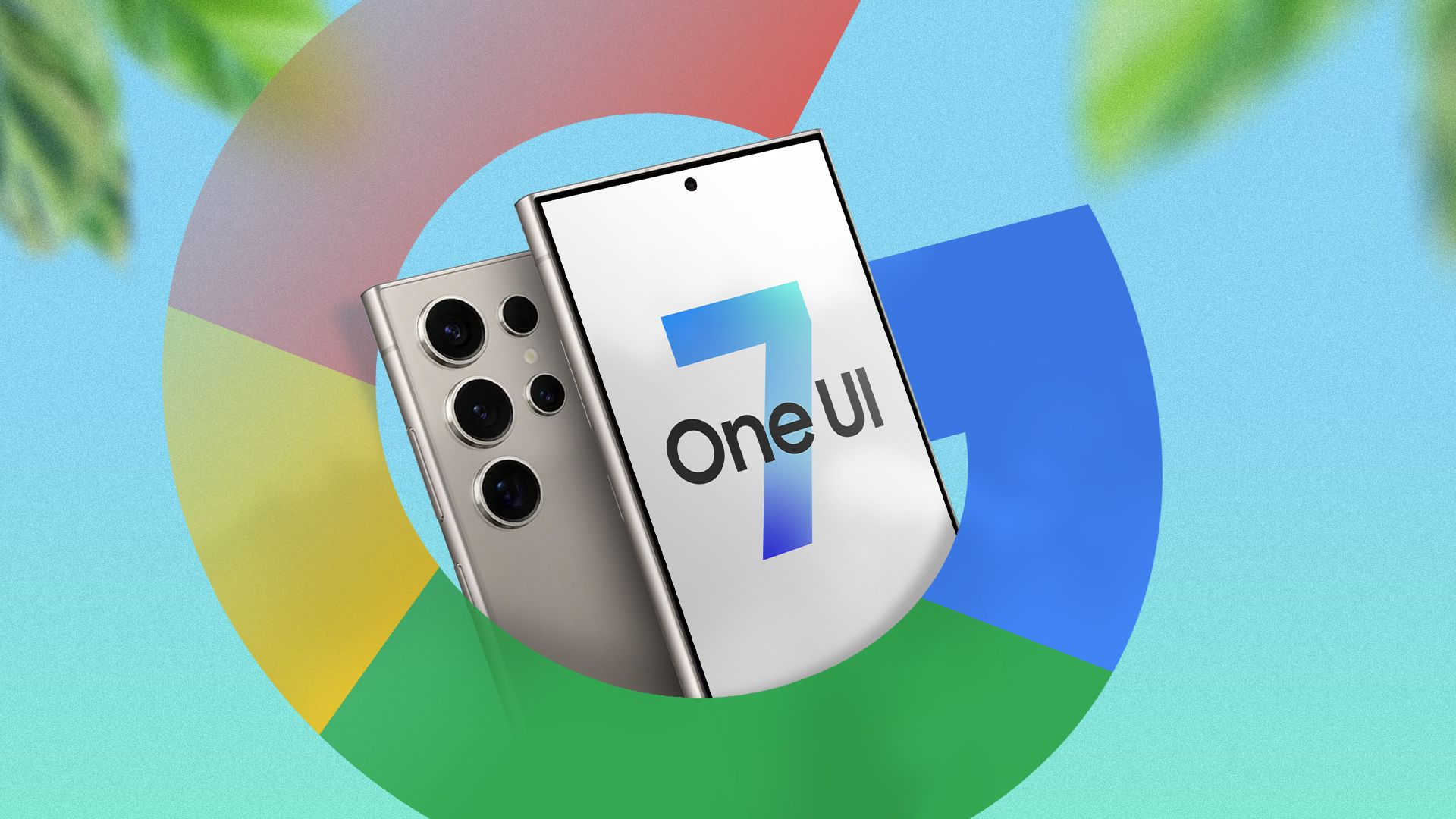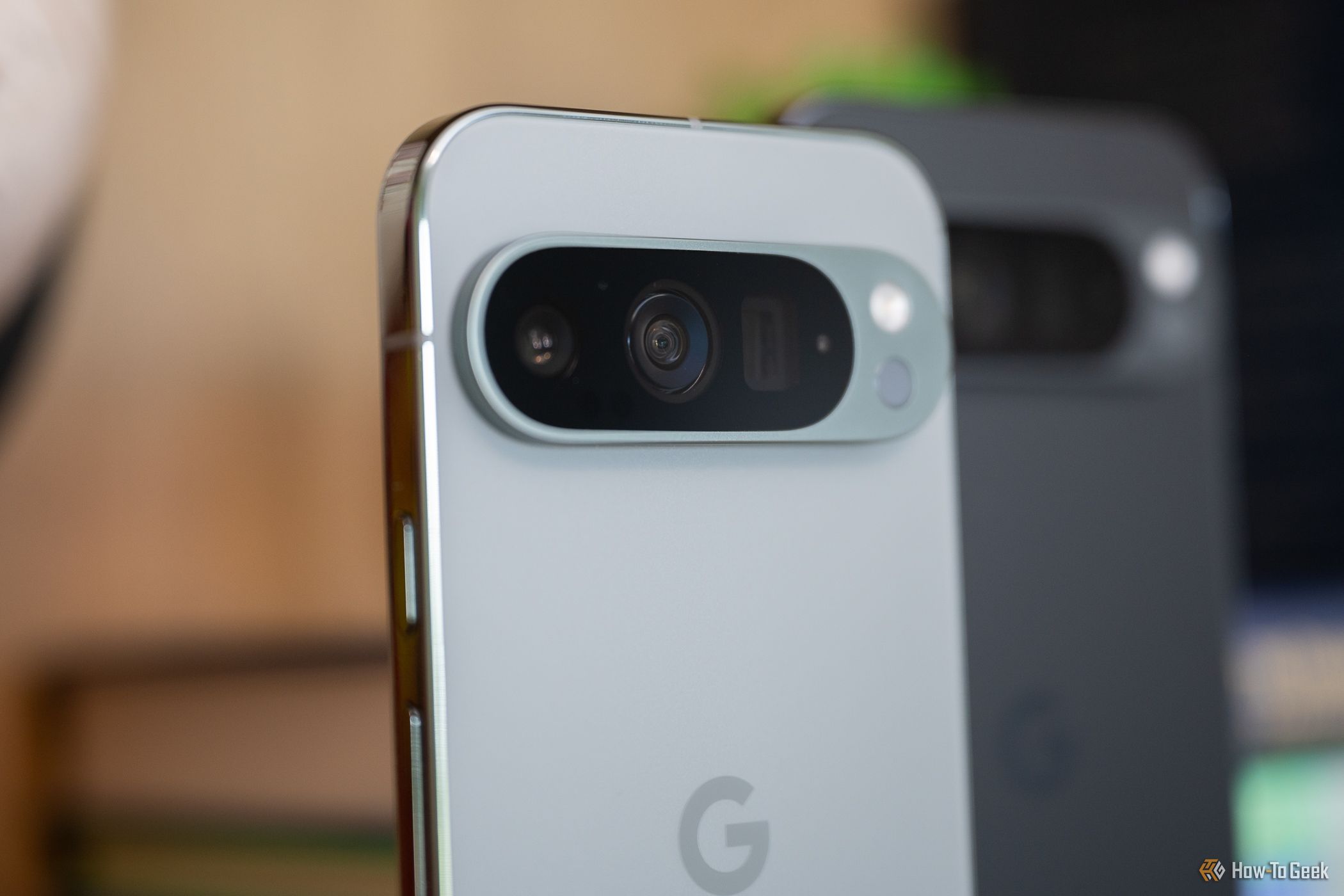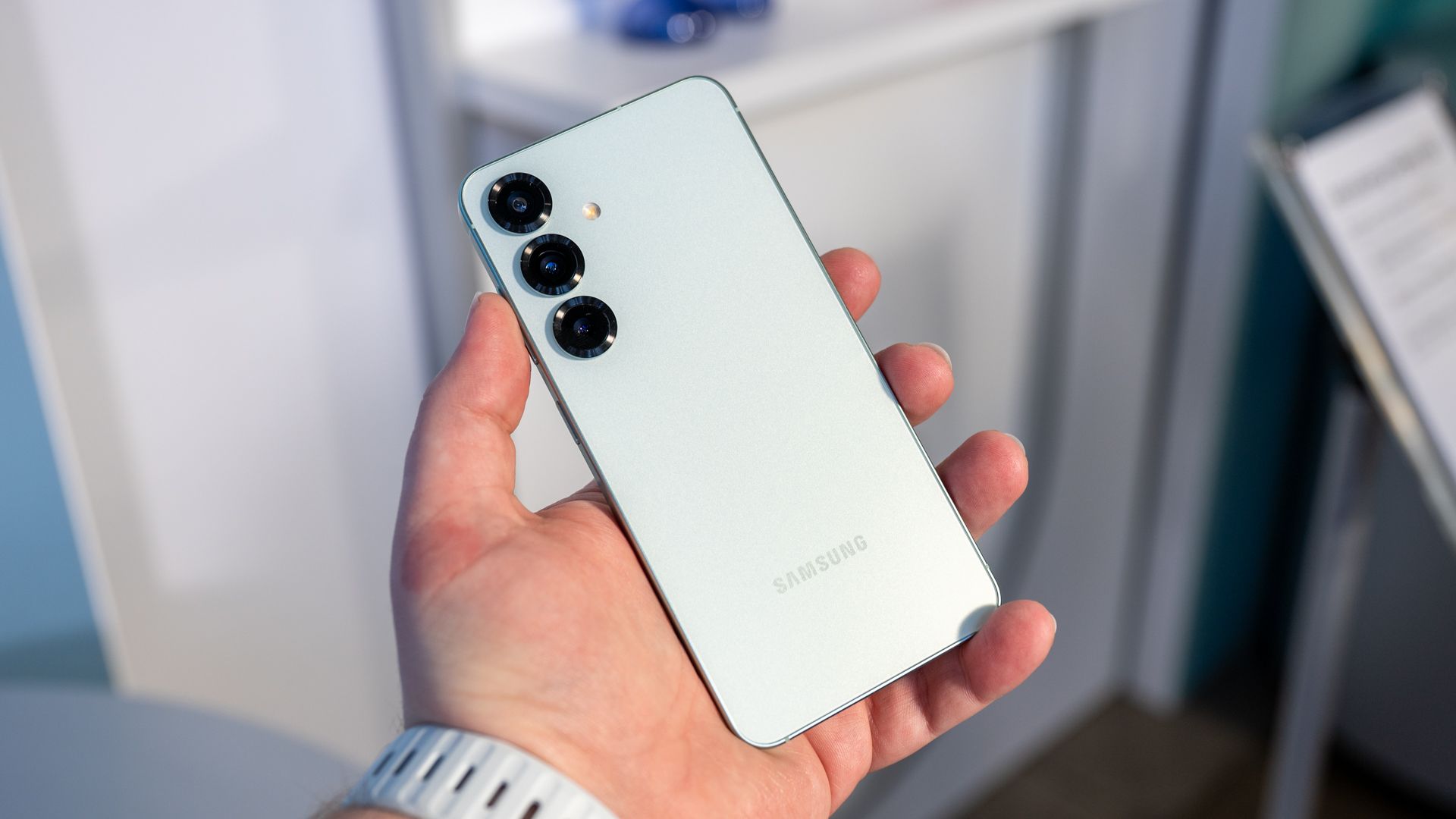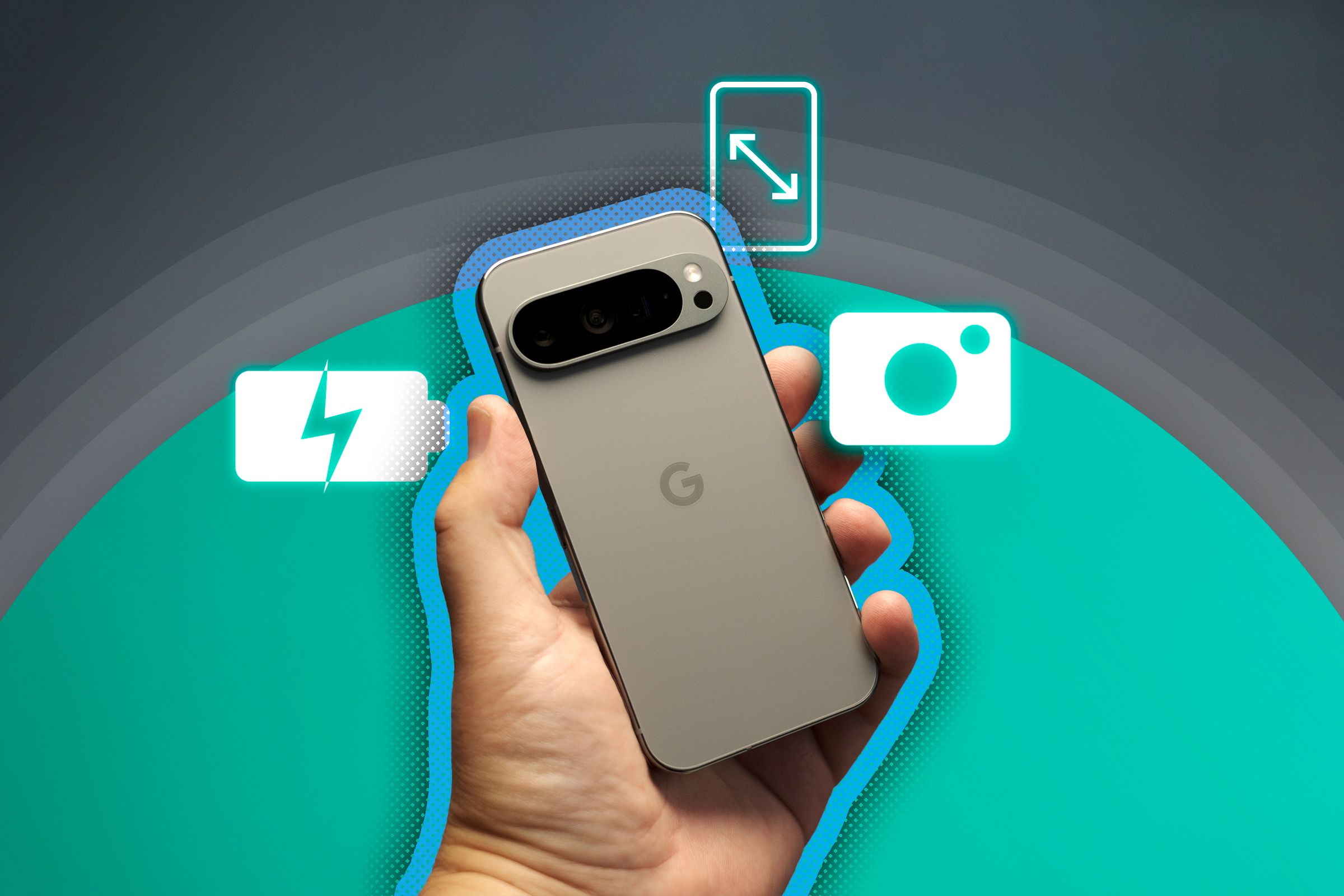The Samsung Galaxy S25 is here. With a compact form factor, an octa-core chipset, and a telephoto camera, the phone, through no fault of its own, competes with the Pixel 9 Pro. If you’re having trouble deciding between the two, here’s a detailed comparison to help you.
Price and Availability
The baseline Galaxy S25 (with 128GB of storage) costs $799.99. You can pre-order the smartphone starting January 23; it will hit stores beginning February 7, 2025.
Launched at $999, the baseline Pixel 9 Pro (with 128GB of storage) is currently available at Best Buy for $749 (if you’re willing to activate it at the store). Otherwise, the phone now costs $849.
Galaxy S25 Is Smaller and Thinner Than the Pixel 9 Pro
The Galaxy S25 and the Pixel 9 Pro have a very different design. While the former has flushed camera sensors on the back (stacked vertically), the latter ships with a horizontal camera visor (with rounded corners).
Measuring 146.9 x 70.5 x 7.2 mm, the Galaxy S25 is shorter, narrower, and significantly thinner than the Pixel 9 Pro, whose dimensions are 152.8 x 72 x 8.5 mm. While Samsung’s flagship weighs 162 grams, Google’s flagship takes the scale to 199 grams.
The phones also share some similarities, including the use of Corning’s Gorilla Glass Victus 2 on the front and the back, an aluminum frame on the side, and an IP68 dust and water resistance rating.
Regarding colors, the Galaxy S25 is available in Icyblue, Mint, Navy, and Silver Shadow. Further, the online-exclusive shades include Pinkgold, Blueblack, and Coralred. On the other hand, the Pixel 9 Pro is available in Porcelain, Rose Quartz, Hazel, and Obsidian finishes.
Pixel 9 Pro Offers a Bigger Yet Sharper Screen
On the Pixel 9 Pro, buyers get a slightly bigger 6.3-inch Super Actua OLED display that supports a variable refresh rate (1-120Hz) and a peak brightness of 3,000 nits. Further, the panel’s resolution stands at 1,280 x 2,856 pixels, resulting in a higher pixel density of 495 ppi.
In comparison, the Galaxy S25 features a slightly smaller 6.2-inch Dynamic AMOLED 2x screen that supports a Super Smooth refresh rate (1-120Hz) and a peak brightness of 2,600 nits. With a 1,080 x 2,340 pixels resolution, the Galaxy S25’s pixel density (416 ppi) is lower than that of the Pixel 9 Pro.
Both the Galaxy S25 and the Pixel 9 Pro feature an ultrasonic under-display fingerprint reader. Always-on display is yet another common feature among the handsets.
Snapdragon 8 Elite (3nm) vs. Tensor G4 (4nm)
At the Galaxy S25’s core is Qualcomm’s latest and greatest chipset for Android devices, the Snapdragon 8 Elite for Galaxy (3nm). Compared to its predecessor, the chipset features improvement across the board, including on the CPU, GPU, NPU, and heat management.
The overlocked prime cores on the Snapdragon 8 Elite for Galaxy result in higher CPU performance, while the addition of Vulkan Engine API and improved ray tracing boost the graphics performance. Even the NPU is capable of handling advanced features like Generative Edit offline.
On the Galaxy S25, the Snapdragon 8 Elite runs alongside 12GB of RAM and up to 512GB of storage. While Qualcomm’s new mobile processor aces the benchmarks, Google Tensor G4 (4nm) SoC did not.
When looked at in isolation, the Tensor G4 (4nm) on the Pixel 9 Pro is a capable processor. It features a 3.1 GHz prime core, along with 16GB of RAM and up to 1TB of UFS 3.1 storage. Although the chipset’s gaming performance isn’t the best in the segment, it isn’t something to ignore entirely.
After the Pixel 9 Pro’s launch, Google clarified that the Tensor G4 is designed to meet users’ day-to-day requirements and run the Google AI features efficiently, not to perform well in benchmarks. Hence, tasks like shooting 4K videos, multitasking between apps, and playing video games at moderate settings shouldn’t be an issue.
One UI 7 vs. Android 15
Out of the box, the Galaxy S25 series comes with One UI 7, which features enhanced Galaxy AI features. Compared to its predecessor, the smartphone is better at interpreting natural language across interactions, including text, speech, images, or videos, allowing it to come up with more personalized and contextually-aware responses.
On the Galaxy S25, Gemini can now access several Samsung and Google apps, letting the AI assistant perform multi-step tasks like checking the schedule for an event in Gmail and adding it to Google Calendar. The Circle to Search feature has also got an upgrade; it can now recognize on-screen phone numbers and email IDs.
Google’s Pixel 9 Pro ships with the stock version of Android 15. Like Galaxy AI, Pixel 9 Pro has Google AI, which includes features like the advanced AI assistant Gemini, Pixel Studio, Pixel Screenshots, a new Weather app, and Call Notes.
Apart from the AI-based features, Android 15 comes with better security and privacy-related features like Theft Detection and Private Space. Last but not least, both the Galaxy S25 and the Pixel 9 Pro will get seven years of operating system and security updates.
Pixel 9 Pro Offers Better Cameras
Even though the Galaxy S25 and the Pixel 9 Pro feature triple-camera setups, the one on the Pixel is better; here’s why.
The Pixel 9 Pro includes a 50MP (f/1.68) primary camera and OIS, a 48MP (f/1.7, 123°) ultrawide camera with autofocus, and a 48MP (f/2.8) sensor with a 5x telephoto lens and OIS. For clicking selfies, the phone gets a 42MP (f/2.2, 103°) front camera.
When compared to the cameras on the Galaxy S25, the Pixel 9 Pro offers a higher resolution across zoom ranges from 0.5x to 10x. It even supports the Super Res Zoom (up to 30x) feature. Additional features include 8K videos at 30 fps, Night Sight Video, Audio Magic Eraser, Magic Editor, and Photo Unblur.
Coming to the Galaxy S25, Samsung has equipped the smartphone with a 50MP (f/1.8) primary sensor, a 12MP (f/2.2, 120°) ultrawide sensor, and a 10MP (f/2.4) sensor with a 3x telephoto lens with OIS. Last but not least, the phone features a 12MP (f/2.2) selfie shooter.
Even though the Galaxy S25 doesn’t have high-resolution sensors, it can record better low-light videos, gets the Audio Eraser feature from the Pixel 9 Pro, and allows you to control the depth-of-field in the Expert RAW mode. And yes, the phone can also record 8K videos at 30 fps.
Google’s Flagship Features a Larger Battery
The Pixel 9 Pro gets a 4,700 mAh battery that supports fast wired charging with Google’s 45W USB-C charger (up to 55% in about 30 minutes), Qi-certified wireless charging, and reverse wireless charging.
With the specifications, the phone is rated to last for over 24 hours on a single charge. When running out, you can use the Extreme Battery Saver mode, which extends the battery life up to 100 hours.
In contrast, the Galaxy S25 sports a 4,000 mAh battery that supports 25W wired charging, Fast Wireless Charging 2.0 (compatible with WPC), and reserve wireless charging.
Per the official specifications page, the Galaxy S25 can last for up to 29 hours of video playback, which is decent. Even Samsung has a battery saver mode that limits background processes and the phone’s performance, but it doesn’t put a number on it.
Which Is the Right Phone for You?
If you prefer compact smartphones with a compact screen, can utilize the exceptional raw performance of the Snapdragon 8 Elite processor, and like the One UI user interface, you can’t go wrong with the vanilla Galaxy S25.
However, if you’re in the market for a smartphone with better cameras, prefer a clean and simple Android experience, and would like to stay from the charger for as long as possible, I recommend you go with the Pixel 9 Pro.
-
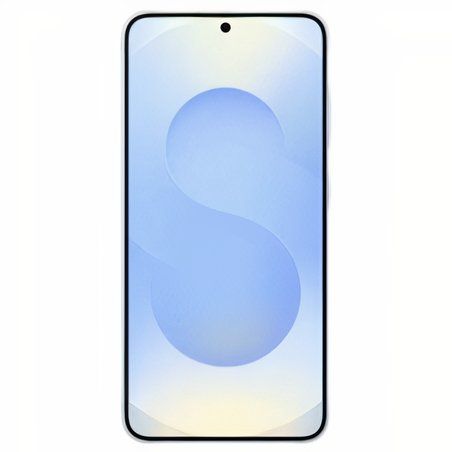
Samsung Galaxy S25
The Samsung Galaxy S25 is a powerful and compact smartphone with a 6.2-inch Dynamic AMOLED 2X display and a 120Hz refresh rate. It is powered by the Snapdragon 8 Elite processor, 12GB of RAM, and a 4,000mAh battery with 25W Super Fast Charging.
-
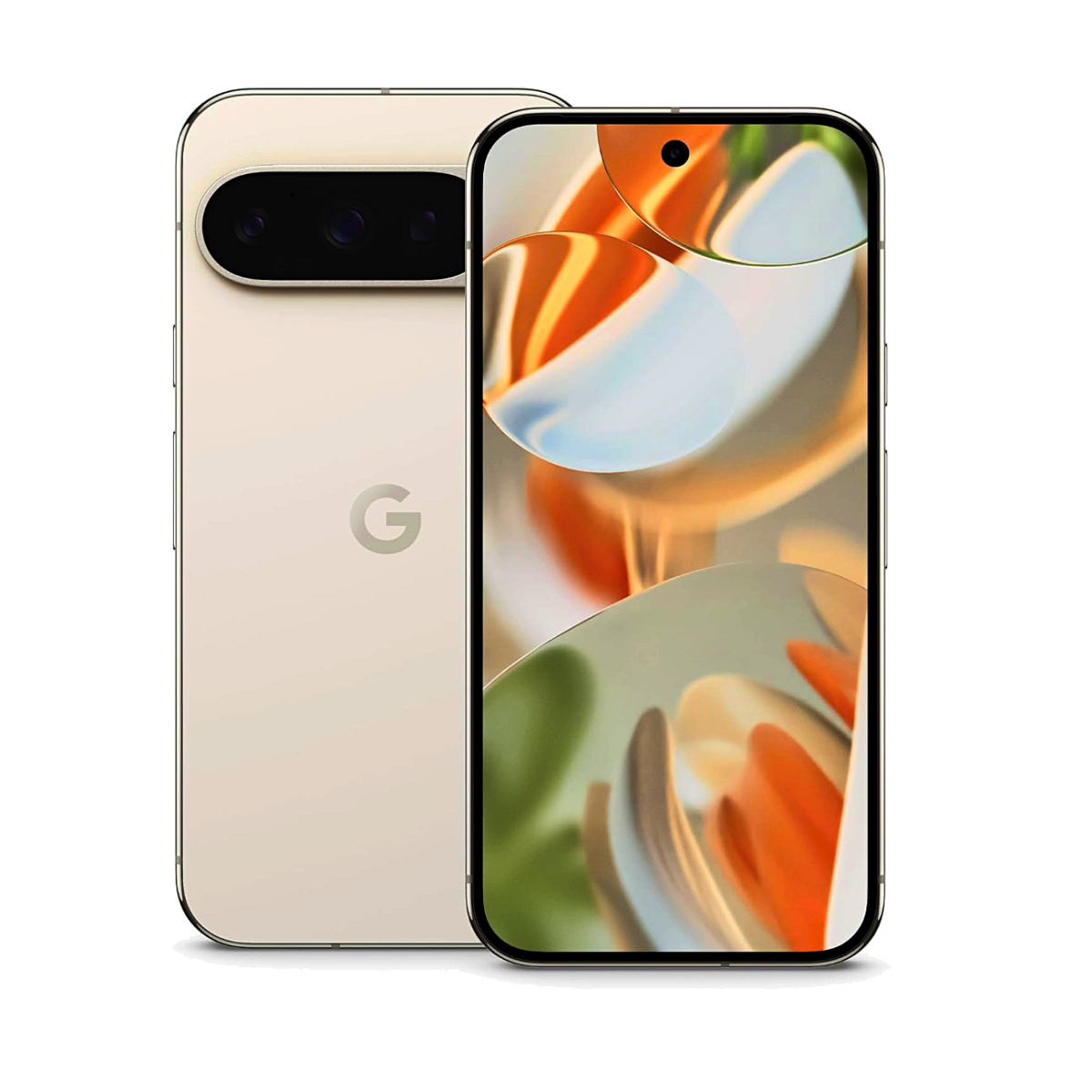
Google Pixel 9 Pro
$839 $999 Save
$160The Google Pixel 9 Pro features a sophisticated design, a powerful Tensor G4 processor, and 16 GB of RAM, making it ideal for advanced AI applications, stunning photos, and videos. It includes a pro triple rear camera system, a 42 MP front camera, and the brightest Super Actua display, offering an immersive experience in two sizes. Pricing starts at $999.


